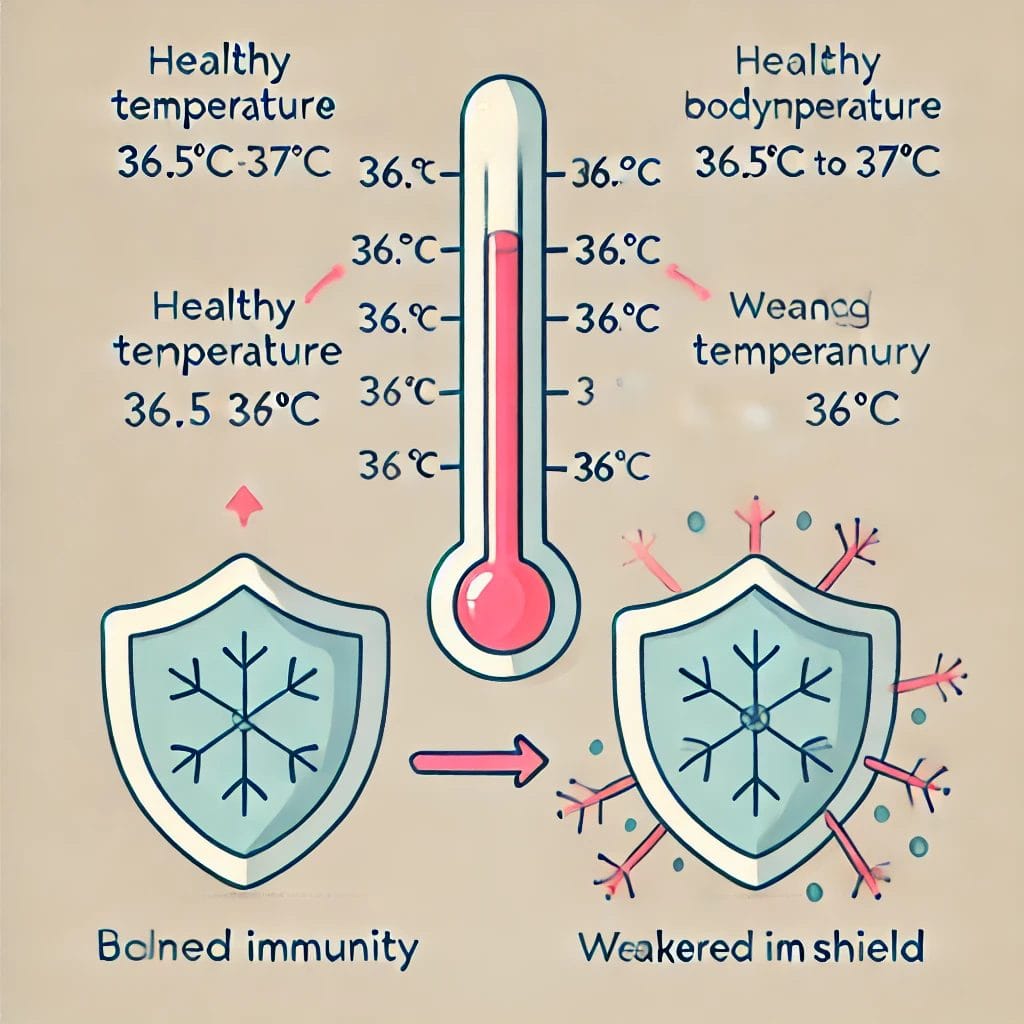For centuries, Koreans have embraced the power of heat to maintain their health.
Whether it’s steamy jjimjilbang (Korean sauna) sessions, hot herbal teas, or warm rice porridges, the idea of “warming the body to heal” is deeply rooted in Korean culture. But is there actual science behind this tradition?
Modern research reveals that higher body temperatures can enhance immunity, improve circulation, and support detoxification. This might explain why Koreans have long relied on warmth as a natural remedy for everything from colds to fatigue. But how exactly does heat impact the body?
Let’s dive into the fascinating connection between body temperature and health.
The Connection Between Immunity and Body Temperature
The natural cycle of the human body follows a seamless energy transition—plant energy converts into animal energy, and animal energy fuels our cells. However, when the body undergoes a regenerative healing response, this process reverses. Interestingly, the higher the body temperature, the more active this healing response becomes.
When we fall ill, our body raises its temperature to activate a regenerative response, boosting enzymatic activity and strengthening white blood cells for combat. Enzymes function more efficiently at higher temperatures, which is why maintaining a warm body is key to optimal immune defense.
Your Immune System: The Body’s Military Force
A nation’s military strength stems from its economy, but the body’s defense force comes from its temperature. Our health is determined by the energy functions of red blood cells and the immune power of white blood cells.
Blood purity plays a vital role in maintaining good health. Since temperature directly influences blood quality, keeping the body warm while following a healthy diet is crucial for overall well-being.
Why Certain Organs Run Hotter
Although the human body is a single organism, different organs maintain different temperatures. Notably, the underarms and mouth tend to be warmer, and among internal organs, the small intestine and heart hold the highest temperatures.
These two organs share several similarities:
The Small Intestine – This organ plays a key role in digestion by breaking down food with gastric juices, bile, and pancreatic enzymes. The intestinal lining is covered in microscopic villi, which are densely packed with 250 billion epithelial cells responsible for nutrient absorption. The nutrients absorbed in the small intestine enter the bloodstream and are delivered throughout the body.
The Heart – The heart circulates oxygen-rich blood to the entire body. It is designed to receive blood through two atria and pump it out through two ventricles. Historically, the heart was considered more than just an organ—it was thought to house human emotions, a belief that highlights its central role in life.
Because of their constant exposure to oxygen and high metabolic activity, both the small intestine and heart generate significant heat.
Why Cancer Cells Struggle in Warm Environments
Cancer cells thrive in low-temperature, low-oxygen environments. However, the small intestine and heart are among the least hospitable places for cancer growth due to their higher temperatures and efficient blood circulation.
A warmer body temperature supports enzymatic activity and regenerative healing, making it harder for abnormal cell growth to take hold. In other words, keeping your body warm isn’t just about comfort—it’s a key factor in disease prevention and long-term health.
COVID-19 and Low Temp, Symptoms and Remedies | Ada Health
have to prepare for post covid-19!


